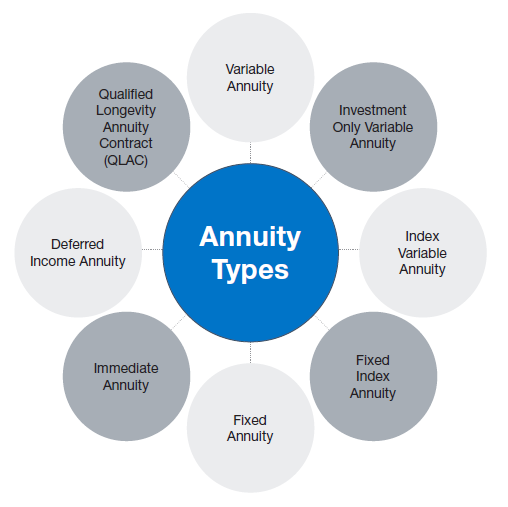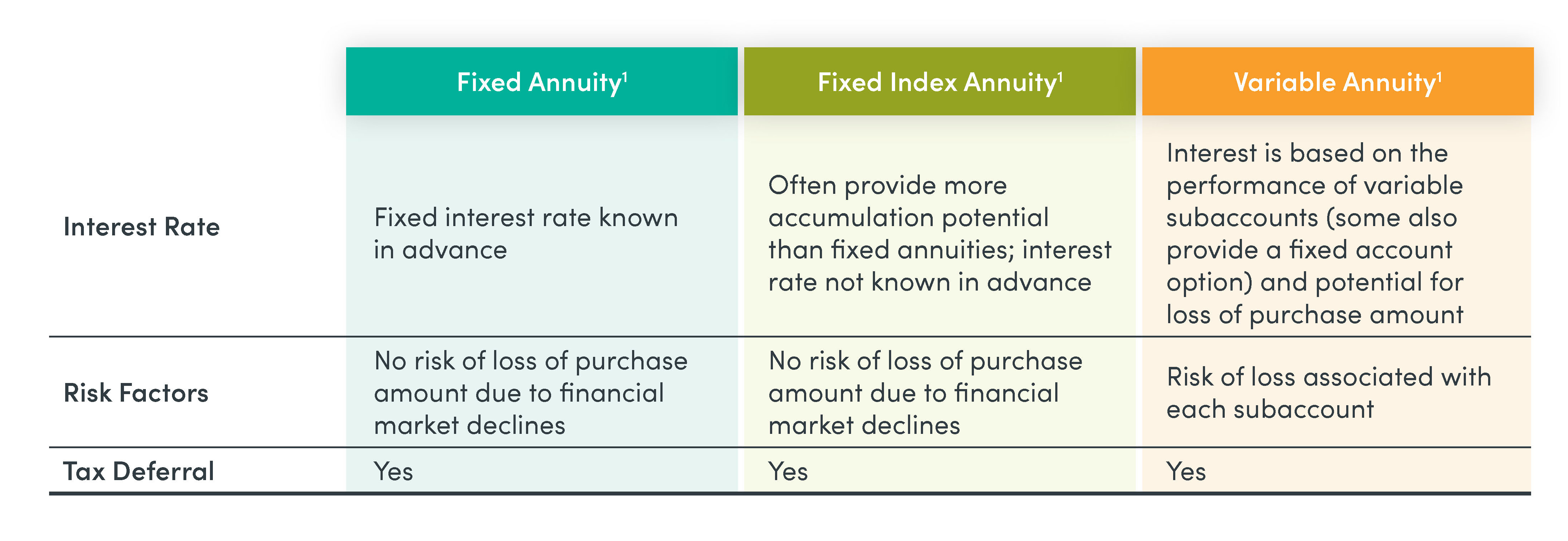All Categories
Featured
Table of Contents
Just as with a repaired annuity, the proprietor of a variable annuity pays an insurance provider a round figure or series of settlements for the guarantee of a collection of future payments in return. However as stated over, while a repaired annuity grows at a guaranteed, constant rate, a variable annuity expands at a variable rate that relies on the efficiency of the underlying investments, called sub-accounts.

Throughout the accumulation phase, properties bought variable annuity sub-accounts expand on a tax-deferred basis and are taxed just when the contract owner takes out those incomes from the account. After the build-up phase comes the earnings stage. With time, variable annuity possessions ought to in theory raise in value until the contract owner determines he or she would certainly like to begin taking out cash from the account.
The most significant issue that variable annuities usually present is high cost. Variable annuities have numerous layers of charges and expenses that can, in aggregate, create a drag of up to 3-4% of the contract's worth each year.
Understanding What Is A Variable Annuity Vs A Fixed Annuity A Closer Look at Annuities Fixed Vs Variable What Is What Is Variable Annuity Vs Fixed Annuity? Features of Variable Vs Fixed Annuities Why Choosing the Right Financial Strategy Is a Smart Choice Fixed Vs Variable Annuity: A Complete Overview Key Differences Between Different Financial Strategies Understanding the Rewards of What Is Variable Annuity Vs Fixed Annuity Who Should Consider Variable Annuity Vs Fixed Annuity? Tips for Choosing the Best Investment Strategy FAQs About Fixed Annuity Vs Equity-linked Variable Annuity Common Mistakes to Avoid When Planning Your Retirement Financial Planning Simplified: Understanding Your Options A Beginner’s Guide to Smart Investment Decisions A Closer Look at How to Build a Retirement Plan
M&E expense fees are calculated as a percent of the agreement value Annuity issuers hand down recordkeeping and various other administrative prices to the contract proprietor. This can be in the kind of a level annual charge or a portion of the agreement value. Administrative charges may be consisted of as part of the M&E threat cost or might be assessed independently.
These costs can vary from 0.1% for easy funds to 1.5% or more for actively handled funds. Annuity agreements can be personalized in a number of methods to serve the specific requirements of the agreement owner. Some typical variable annuity riders consist of ensured minimum build-up advantage (GMAB), guaranteed minimum withdrawal advantage (GMWB), and guaranteed minimum earnings advantage (GMIB).

Variable annuity contributions offer no such tax deduction. Variable annuities tend to be very ineffective cars for passing wealth to the future generation because they do not delight in a cost-basis change when the original agreement proprietor passes away. When the owner of a taxable financial investment account passes away, the expense bases of the financial investments held in the account are gotten used to show the marketplace rates of those investments at the time of the proprietor's fatality.
Exploring Indexed Annuity Vs Fixed Annuity A Closer Look at How Retirement Planning Works Defining Fixed Vs Variable Annuity Features of Smart Investment Choices Why What Is Variable Annuity Vs Fixed Annuity Is a Smart Choice Fixed Index Annuity Vs Variable Annuity: Explained in Detail Key Differences Between Fixed Annuity Vs Variable Annuity Understanding the Key Features of Long-Term Investments Who Should Consider Indexed Annuity Vs Fixed Annuity? Tips for Choosing the Best Investment Strategy FAQs About What Is A Variable Annuity Vs A Fixed Annuity Common Mistakes to Avoid When Planning Your Retirement Financial Planning Simplified: Understanding Fixed Indexed Annuity Vs Market-variable Annuity A Beginner’s Guide to Fixed Interest Annuity Vs Variable Investment Annuity A Closer Look at Indexed Annuity Vs Fixed Annuity
Such is not the situation with variable annuities. Investments held within a variable annuity do not receive a cost-basis adjustment when the initial proprietor of the annuity dies.
One significant issue associated with variable annuities is the possibility for disputes of interest that may exist on the part of annuity salesmen. Unlike a financial advisor, that has a fiduciary task to make investment decisions that benefit the client, an insurance broker has no such fiduciary obligation. Annuity sales are highly profitable for the insurance experts who sell them because of high upfront sales payments.

Several variable annuity agreements contain language which places a cap on the percent of gain that can be experienced by certain sub-accounts. These caps avoid the annuity owner from completely getting involved in a part of gains that can or else be appreciated in years in which markets create substantial returns. From an outsider's viewpoint, presumably that financiers are trading a cap on investment returns for the abovementioned guaranteed floor on investment returns.
As noted over, surrender costs can significantly restrict an annuity proprietor's capability to move assets out of an annuity in the very early years of the agreement. Even more, while the majority of variable annuities permit agreement proprietors to take out a specified amount throughout the accumulation stage, withdrawals beyond this amount commonly result in a company-imposed charge.
Withdrawals made from a set rates of interest financial investment alternative can also experience a "market price adjustment" or MVA. An MVA adjusts the value of the withdrawal to mirror any kind of modifications in rates of interest from the time that the money was purchased the fixed-rate option to the time that it was taken out.

On a regular basis, even the salesmen who market them do not completely understand how they function, and so salespeople in some cases take advantage of a customer's emotions to sell variable annuities as opposed to the values and suitability of the items themselves. Our company believe that capitalists need to completely recognize what they have and just how much they are paying to have it.
Analyzing Strategic Retirement Planning Key Insights on Variable Annuity Vs Fixed Annuity What Is the Best Retirement Option? Advantages and Disadvantages of Choosing Between Fixed Annuity And Variable Annuity Why Deferred Annuity Vs Variable Annuity Can Impact Your Future Variable Annuities Vs Fixed Annuities: Explained in Detail Key Differences Between Different Financial Strategies Understanding the Risks of Long-Term Investments Who Should Consider Strategic Financial Planning? Tips for Choosing Variable Annuity Vs Fixed Indexed Annuity FAQs About Planning Your Financial Future Common Mistakes to Avoid When Planning Your Retirement Financial Planning Simplified: Understanding Your Options A Beginner’s Guide to Smart Investment Decisions A Closer Look at Deferred Annuity Vs Variable Annuity
The very same can not be stated for variable annuity possessions held in fixed-rate investments. These properties lawfully come from the insurer and would certainly therefore go to risk if the business were to fall short. In a similar way, any type of assurances that the insurance coverage business has actually agreed to offer, such as an ensured minimum revenue advantage, would remain in inquiry in the occasion of a company failing.
Therefore, possible purchasers of variable annuities ought to recognize and take into consideration the monetary condition of the issuing insurance provider before entering right into an annuity agreement. While the advantages and drawbacks of numerous kinds of annuities can be debated, the genuine issue bordering annuities is that of suitability. Simply put, the question is: that should own a variable annuity? This inquiry can be challenging to answer, provided the myriad variants offered in the variable annuity universe, however there are some fundamental guidelines that can aid financiers determine whether or not annuities should play a function in their monetary plans.
Nevertheless, as the saying goes: "Customer beware!" This post is prepared by Pekin Hardy Strauss, Inc. Low-risk fixed annuities. ("Pekin Hardy," dba Pekin Hardy Strauss Riches Monitoring) for informational functions just and is not meant as an offer or solicitation for company. The information and information in this article does not make up legal, tax obligation, accountancy, financial investment, or other expert suggestions
Table of Contents
Latest Posts
Analyzing Variable Vs Fixed Annuity Everything You Need to Know About Financial Strategies Breaking Down the Basics of Fixed Index Annuity Vs Variable Annuity Pros and Cons of What Is A Variable Annui
Highlighting the Key Features of Long-Term Investments A Closer Look at How Retirement Planning Works Defining the Right Financial Strategy Features of Fixed Vs Variable Annuity Pros And Cons Why Fixe
Understanding Financial Strategies Key Insights on Deferred Annuity Vs Variable Annuity Breaking Down the Basics of Investment Plans Benefits of Fixed Income Annuity Vs Variable Growth Annuity Why Fix
More
Latest Posts